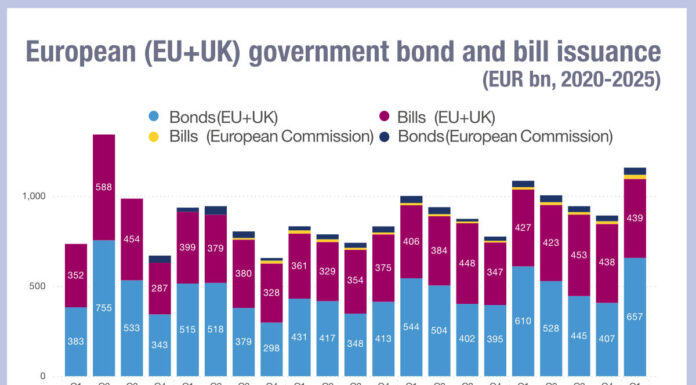
Dan Philip, Institutional Sales & Trading at Jane Street speaks to The DESK.
How has the bond market changed this past year, in the aftermath of 2020?
As traders adapt to a post-Covid market, they have increasingly focused on strategy optimisation: looking at all the tools at their fingertips and figuring out how to tailor their execution to meet their individual needs.
The last few years were characterised by incredible growth and uptake of several new ways of trading – innovations like electronification, portfolio trading, and alternative liquidity providers. This past year has been unique in that it has marked an arrival point for many of those innovations. In the face of volatility and uncertainty,
emerging trading techniques and innovations like automation, ETFs, and portfolio trading came of age and have remained a part of the bond trader’s arsenal ever since.
In many ways, the question for market participants is no longer if or when these new liquidity sources will factor into their trading, but instead how to best incorporate them.
What is your role as an alternative liquidity provider in fixed income?
The alternative liquidity provider’s role is to give a new level of depth, customisation, and specificity to fixed income liquidity. Ten years ago, the majority of bond trading was a manual process that went through single, large institutions, which led to a large and broad pool of liquidity but a lack of speed or specialisation. Often, you would see liquidity crunches in certain names, alongside difficulties trading odd lots or portfolios of bonds. Because alternative liquidity providers tend to be nimbler and more specialised, we are able to identify and fill in the gaps in the existing market structure and provide real depth to those areas. At Jane Street, for example, our differentiators are our expertise in pricing bond portfolios and our ability to hold and manage risk – these allow us to adapt to our clients’ needs quickly and easily.
An exciting development we’ve seen in recent years is that modern bond desks are broadening their list of liquidity providers and connecting to a wider range of counterparties. This has two major effects: it means that fixed income traders are able to tailor their execution methods, and in many cases it can reduce costs by eliminating fees from intermediaries. By connecting to multiple liquidity providers, fixed income traders are able to take advantage of each counterparty’s individual strengths alongside the broad base of liquidity from larger institutions. This results in a real increase in execution quality across the board.
What product trends have you observed in the past year?
In our experience, we’ve observed increased uptake of fixed income ETFs and portfolio trading
among many of our clients. These observations have been confirmed across the industry in a survey of fixed income traders we sponsored with WBR. In particular, firms have derived enhanced liquidity and efficiency from adopting new trading tools like automation and portfolio trading in conjunction with expanded liquidity partnerships and products like ETFs. The survey’s results show many market participants are using fixed income ETFs as a liquidity tool after they proved valuable in the face of market turmoil last March.
In a similar vein, traders have embraced portfolio trading as a protocol that can improve efficiency and offer enhanced liquidity. When looking at the survey responses, it appears that continued growth of portfolio trading will come not just from both greater adoption of the protocol but, notably, from broader applications.
How has electronification contributed to these trends?
The emergence of electronic trading venues has underpinned much of the recent innovation in the bond market for the past decade. Where bond trading used to be very manual and high-touch by necessity, now we have a variety of execution methods including all-to-all, RFQ platforms, and more. While there is certainly still a place for phone or chat trading, electronic platforms like these open the door for new types of trading and counterparties. Because they allow investors to access a wider range of counterparties and, as a result, a broader range of liquidity. Liquidity providers can specialise more, and investors can get more tailored and efficient execution in many ways.
The growth of these electronic venues seems to go hand-in-hand with adoption of automation tools, as these venues have both improved liquidity and broadened access to technological developments. The end result is a robust bond market where traders use these modern tools and developments harmoniously with “old-world” methods.
©Markets Media Europe 2021
©Markets Media Europe 2025
























